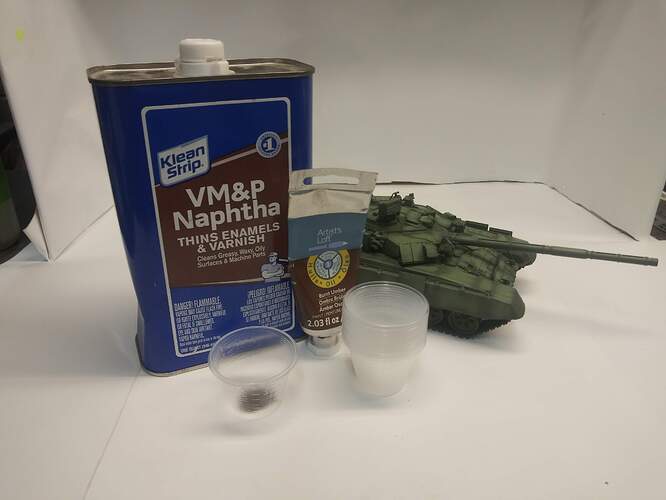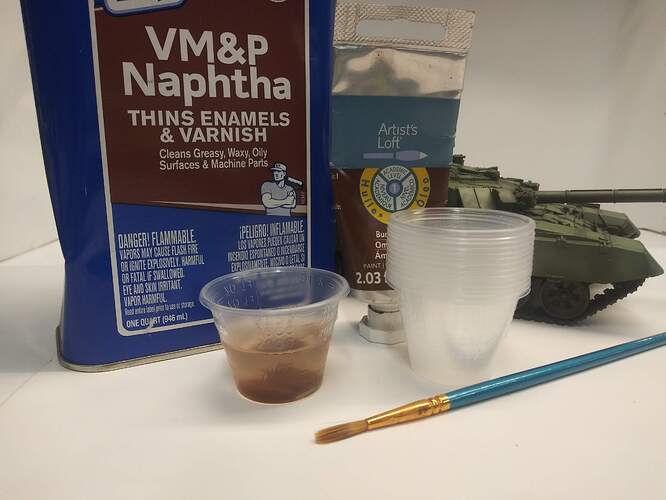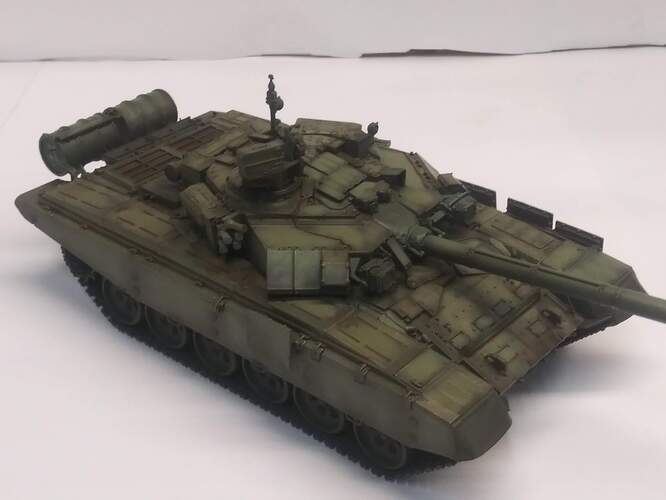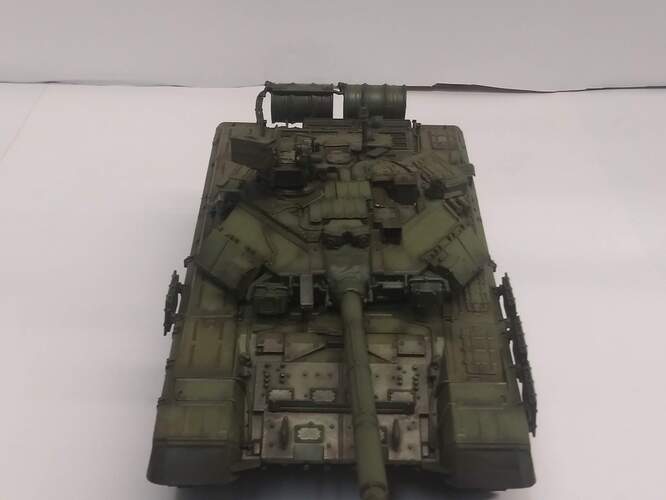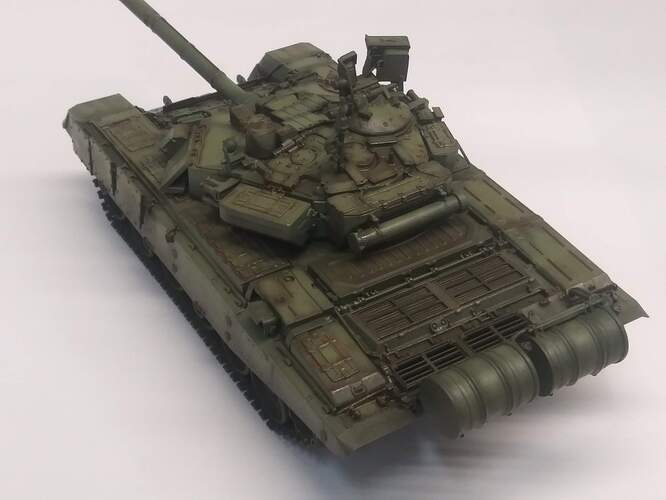Filters . What are they and what do they do?
A filter is a ultra form of paint. The carrier can be acrylic , water , or chemical based. I prefer the chemical option. In this case the chemical option is VM&P Naphtha. ( its zippo lighter fluid essentially). The filter when applied changes the tone of the color it is applied over . It is similar to use those red and blue paper glasses to watch a early 3d movie . It fools the eye into seeing the color as a blended and softened color while still retaining the color fade transitions.
For this build I am using Artists Loft Burnt Umber oil paint.
Once the filter is mixed it is applied with a soft brush in a dabbing motion ( never brush it on , it will leave tide marks).
This particular mix is a heavy filter , and will double as a pin wash for much of the vehicle .
It can be left as is or can be refined with a cotton bud by wiping away excess filter once dry also a damp cotton bud will work in certain areas to remove more.
The above images demonstrate how much was used.
